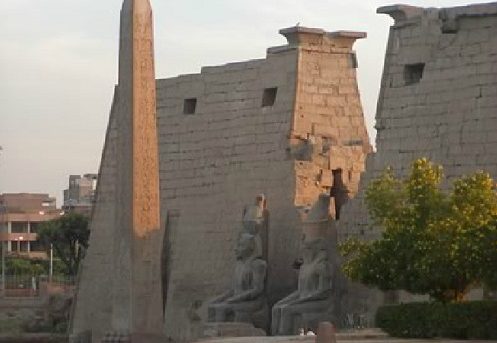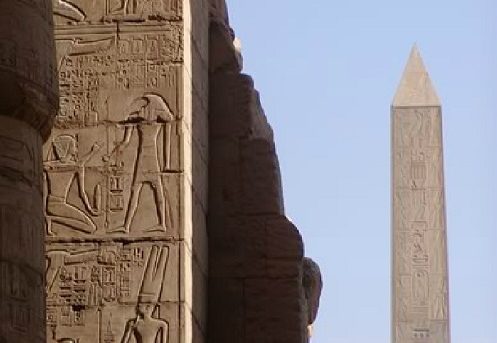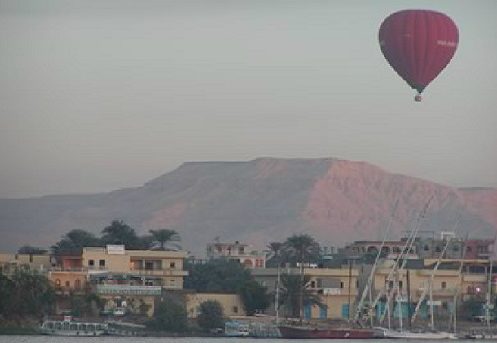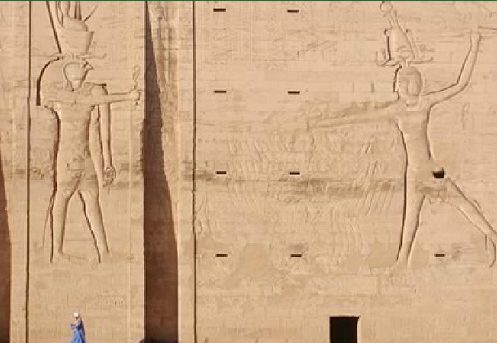
09 Dec Treasures of Luxor & the Nile River – Egypt
Continued travels from ‘Welcome in Egypt!’
The basket is different than we imagined, extremely sturdy, comfortably padded, and connected to the balloon with steel bars. Captain Ahmed ignites the huge flame by squeezing a little lever and before we know it, we’re drifting over Luxor. Thanks to Magic Horizon Balloons Egypt,we can see the whole of Luxor and imagine a time of Pharaohs- erecting enormous temples in honor of their many gods, decorating tombs to prepare for the after-life. Below us, the remains of these ancient empires are scattered like an open-air museum around the Nile River, clearly the lifeblood of Egyptian civilization for 5000 years. Villagers wave excitedly to us from their less regal abodes of the present, usually roofless and made of mud-brick or stone. Donkeys noisily object to the sound of our balloon burner as we dip low over the sugar cane fields. In the distance, we can see the center of town, where honking traffic, grand hotels and opportunistic salesmen remind us that tourists are the honored guests of today. Along the waterfront amidst this commercial center, the mosque inside Luxor Temple’s ruins sits quiet until the next call to prayer.
Luxor – Egypt
In bustling Luxor town, we tried wonderful new foods in shabby little cafes and chatted with the kind managers in our Everest Hotel, then jumped in a mini-bus for a quick ride north through town to Karnak Temple, one of the most magnificent things we’ve ever seen in the world, let alone Egypt. We easily spent a few hours gawking at the monolith statues, columns and obelisks; the pink and black granite shining through under thirty centuries of dirt and decay. The walls were absolutely covered in well-preserved carvings, telling mythical stories through hieroglyphics and pictures of the gods. Though it was then hard to imagine anything more intriguing than Karnak, we ferried across the Nile to explore the west bank and the Theban Necropolis, a desert valley chock full of tombs and temples from the ancient capital of Thebes. The west bank is significantly more rural than Luxor, with nothing more than a few villages and ruined temples dotting the otherwise barren desert. We grabbed a taxi around the hills to the Valley of the Kings, where we explored a few of the tombs that crawl deep into the hills. It was amazing to think that all the elaborate paintings and carvings in these dark tunnels were done for kings that were already dead! A short walk out of the valley and we were then alone on top of the Theban Hills, enjoying a magnificent view of the rest of the Necropolis’s temple ruins. Happy not to leave the west bank, we ate and slept well in Gurna village at the stylish but traditional, mud-brick hotel, Nour el-Qurna.
The River Nile – Dahabia Cruise – Egypt
Having traveled alongside the Nile, tested its waters briefly in a felucca, and gazed out at the river for days (read here), it was time that we traveled this natural highway. However, we were far from romanced by the dozens of large cruise boats that hurriedly ply the river, so it was only too perfect that we found Enrique and Mamdu of Nour el-Nil, who introduced us to the dahabia. A motorless, double-sailed boat used for Nile travel in the 1800’s, the dahabia is making a come-back and we couldn’t think of a better way to experience the river. For the rest of the week, we – along with a lovely retired French couple and engaging British writer – enjoyed the Nile and its treasures from our luxurious dahabia, Assouan. Taking the journey between Luxor and Aswan nice and slow, there was plenty of time to explore temples, villages and desert valleys in-between lounging on the sofa-filled top deck and dining on three-course gourmet meals. We joined the crowds to visit the famous temples at Esna and Edfu, then adventured on our own to lesser-known and rarely visited sites. At El Kab, we felt like archaeologists, searching through rubble for carved reliefs from an ancient city, then venturing deep in the uninhabited desert to explore small tombs and temples. At Wadi el Chatt, we walked alone across sand dunes to watch the sun set, and at Djebel Silsileh, we explored the quarry by night, prowling around the rocks that were used to build Egypt’s temples. In rural villages, excited children followed us around, boys on donkeys came to greet us, farmers showed us their fields and women offered us bread and tea. Each time we came back to the boat, the Dahabia staff made us feel like family coming home.
On our fourth day on the boat, we are anchored for the night at a small island in the middle of the Nile. After dinner the staff invite us onto the grassy shore for sheesha, singing and dancing around a bonfire. We listen to their sweet voices as the tugboat captain dances, shaking his hips skillfully like a belly dancer. Their galabiyaa robes are lovely and the scarves around their necks and heads so exotic. Their smiling faces glow in the fire light, their singing and clapping so animated and jovial. It’s nothing flamboyant or exaggerated for us – just crew mates jamming together after a day’s work on the Nile.
We are moved by them; by the Egyptians’ warmth, laughter, friendship and brotherhood. They are always happy to smile for our cameras, but we know, regardless of how many photos we take with us, these memories will be carved in our minds, forever reminding us of the beauty of Egypt.
Rebecca Rasmus – Written in 2004 – Egypt



































No Comments